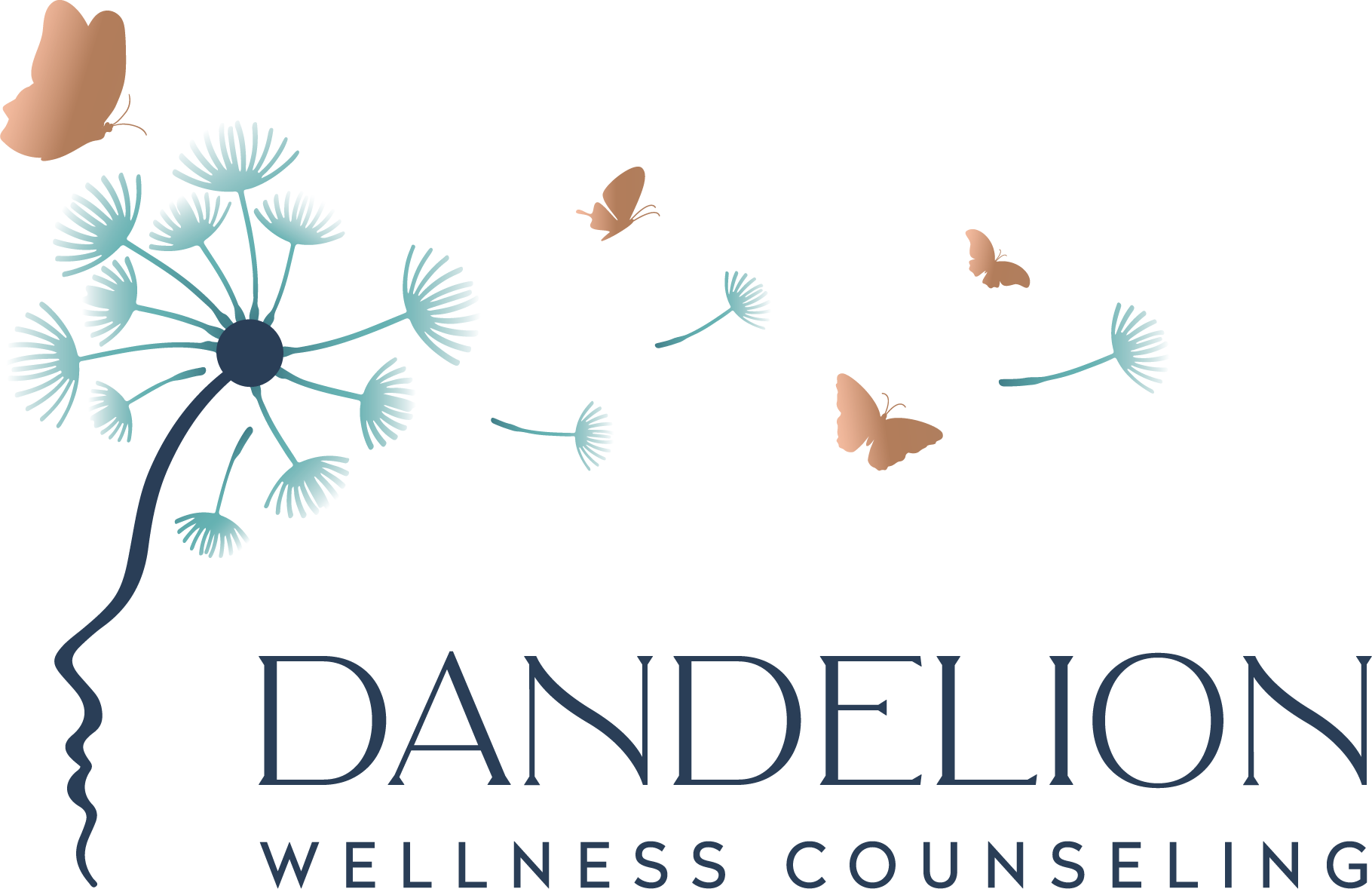How Does Cognitive Behavioral Therapy Work? An Inside Look at the Process
If you’ve heard about Cognitive Behavioral Therapy (CBT), you probably know it’s one of the most recommended approaches for treating anxiety, depression, and a range of emotional challenges. But knowing it “works” and understanding how it works are two different things.
At Dandelion Wellness Counseling, we regularly meet people who are interested in CBT but hesitant to start because they’re unsure what to expect. That’s totally valid — and it’s why we’re breaking down the process step by step.
So, how does Cognitive Behavioral Therapy work? Let’s walk through what actually happens in CBT, why it’s so effective, and what the journey looks like in real life.

What Is Cognitive Behavioral Therapy, Really?
Cognitive Behavioral Therapy is a structured, evidence-based approach to mental health treatment. It’s built on one central idea:
How you think influences how you feel — and how you behave.
CBT helps you notice the thoughts that drive your emotional responses and behaviors, then gives you the tools to shift those thoughts into more helpful ones.
It’s used to treat a wide range of conditions, including:
- Anxiety (generalized, social, panic)
- Depression
- OCD
- Phobias
- PTSD
- Stress
- Low self-esteem
- Relationship challenges
- Life transitions
But CBT isn’t just for diagnoses. It’s a practical, problem-solving framework for anyone who wants to feel better, think clearer, and respond to life in healthier ways.
So, How Does Cognitive Behavioral Therapy Work?
CBT is all about building self-awareness and applying specific tools to interrupt unhelpful patterns. Here’s how the process typically works in a therapeutic setting like ours at Dandelion Wellness Counseling:
1. Assessment and Goal Setting
CBT starts with understanding what’s going on — not just on the surface, but under the hood.
During your first session(s), your therapist will ask about:
- Your current symptoms or concerns
- Patterns you’ve noticed in your thoughts or behaviors
- Situations that feel especially difficult or triggering
- What you’ve tried already — and how it’s worked
From there, you’ll collaborate to define your therapy goals. These aren’t vague resolutions like “be happier.” They’re specific, actionable, and measurable. For example:
- “I want to stop avoiding social events due to anxiety.”
- “I want to feel less overwhelmed at work.”
- “I want to reduce the frequency of panic attacks.”
Setting clear goals helps guide your progress and track real results.
2. Identifying Thought Patterns
Once goals are in place, CBT helps you become aware of your inner dialogue — the thoughts that automatically run through your mind in response to situations.
Let’s say you’re invited to a meeting with your boss. Your automatic thought might be:
“I must’ve done something wrong. I’m probably in trouble.”
That thought triggers anxiety, which might lead to behaviors like overpreparing, losing sleep, or avoiding the meeting altogether.
In CBT, you and your therapist would look at this thought together:
- What’s the evidence that it’s true?
- Are there other explanations?
- What would you say to a friend who had this thought?
This awareness is the first step to change. You can’t shift what you can’t see.
3. Challenging and Reframing Thoughts
Once you recognize your automatic thoughts, CBT gives you the tools to challenge and reframe them.
Using structured techniques (like cognitive restructuring), you’ll learn to replace unhelpful thoughts with more accurate and balanced ones.
Instead of:
“I’m going to mess everything up.”
You might work toward:
“I’ve made mistakes before, but I’ve also handled a lot successfully. I can prepare and do my best.”
This isn’t about forced positivity — it’s about clarity. Thought reframing reduces emotional intensity and helps you respond more effectively.
4. Changing Behavior Patterns
CBT doesn’t stop with changing how you think. It also focuses on what you do — because behavior reinforces belief.
If you avoid something because of fear, that avoidance makes the fear stronger. CBT helps break that cycle through:
- Behavioral activation: Taking small, intentional actions even when you feel stuck or unmotivated.
- Exposure techniques: Gradually facing feared situations to reduce sensitivity over time.
- Skill-building: Practicing decision-making, communication, or coping skills that align with your goals.
These behavioral shifts help solidify cognitive changes. As you take new actions, you gather real-life proof that challenges your old beliefs.
5. Practice Between Sessions
One of the defining features of CBT is its emphasis on homework — not in a punitive way, but as a chance to apply what you’ve learned.
Examples of between-session tasks might include:
- Keeping a thought record
- Trying a new behavior
- Tracking mood changes
- Practicing relaxation techniques
At Dandelion Wellness Counseling, we tailor homework to your lifestyle and goals — no generic worksheets unless they’re genuinely helpful for you.
6. Measuring Progress and Adjusting the Plan
CBT is collaborative. Throughout the process, you and your therapist will regularly check in on:
- What’s improving
- What’s still challenging
- What needs to shift
You’ll refine your goals, adapt your strategies, and celebrate milestones — both big and small. Therapy isn’t linear, but CBT helps you stay oriented even when things feel hard.
How Long Does CBT Take to Work?
One of the advantages of CBT is its efficiency. Many clients begin noticing changes within 4 to 6 sessions, especially when they’re actively applying what they learn.
The total duration of CBT depends on:
- The complexity of your challenges
- How consistently you attend and engage
- Your personal goals
Some people benefit from short-term CBT (10–20 sessions), while others choose to continue longer for deeper or ongoing work. At Dandelion Wellness Counseling, we help you determine the right pace and plan for your needs.
Why Is CBT So Effective?
CBT has been studied extensively — and it consistently ranks as one of the most effective therapies for a wide range of issues.
Here’s why:
✅ It’s Skills-Based
You don’t just talk about problems — you learn how to handle them. You leave therapy with a toolkit you can keep using.
✅ It’s Structured, But Flexible
CBT follows a clear framework, but it’s not rigid. Your sessions are personalized to your needs and personality.
✅ It Builds Self-Reliance
The goal isn’t lifelong therapy. CBT is designed to help you gain independence and confidence in managing your mental health.
✅ It’s Based in the Present
While your history matters, CBT focuses on how your current thoughts and behaviors are impacting your life now — and what you can do about it.
What CBT Feels Like: Realistic Expectations
If you’ve never tried therapy before, it’s natural to wonder: What does it actually feel like to go through CBT?
Clients often describe it like this:
- “It’s like turning the lights on in a room I didn’t realize was dark.”
- “I finally understand why I think the way I do — and what to do about it.”
- “It’s not always comfortable, but it’s empowering.”
CBT requires effort, honesty, and patience — but it’s highly rewarding. And with the right therapist, the process feels collaborative, not clinical.
How We Approach CBT at Dandelion Wellness Counseling
Not all CBT is created equal. At Dandelion Wellness Counseling, we approach Cognitive Behavioral Therapy with both clinical expertise and deep compassion.
Here’s what you can expect when working with us:
- Licensed therapists trained in CBT and trauma-informed practices
- Personalized sessions that move at your pace
- Virtual availability for convenience and accessibility
- Collaborative planning — you’ll never feel like therapy is being done to you
- Supportive, non-judgmental space where you can explore challenges honestly
Whether you’re dealing with persistent anxiety, self-doubt, decision fatigue, or you just want to develop a better relationship with your own mind, CBT can help — and we’d love to support you.
Learn more about our Cognitive Behavioral Therapy services or schedule a free consultation.
When CBT May Not Be the Right Fit
While CBT helps many people, it’s not the best starting point for everyone. If you’re experiencing:
- Active psychosis
- Severe cognitive impairment
- Intense suicidal ideation
- Complex trauma that requires a different approach
…a different modality may be more appropriate. That’s why we begin with a free consultation — to match you with the right care.
Final Thoughts: Is CBT Right for You?
If you’ve been wondering how Cognitive Behavioral Therapy works, we hope this article has demystified the process. It’s not magic. It’s not passive. But it is highly effective — and often life-changing.
CBT gives you the clarity to recognize what’s keeping you stuck and the tools to move forward with confidence. Whether your thoughts are anxious, self-critical, or overwhelming, you don’t have to stay trapped in those patterns.
At Dandelion Wellness Counseling, we’re here to help you create that change — in a way that feels grounded, compassionate, and doable.
